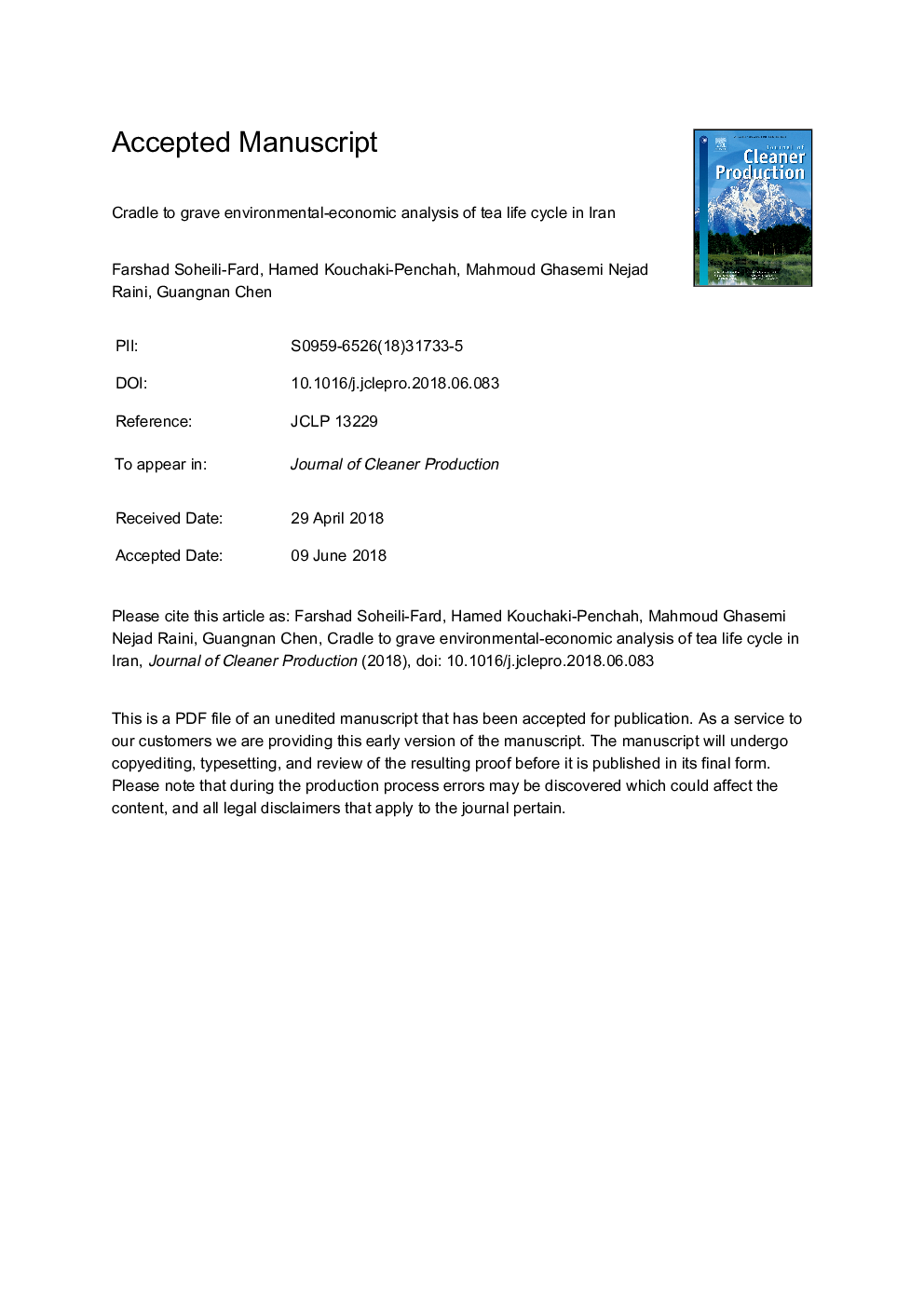| کد مقاله | کد نشریه | سال انتشار | مقاله انگلیسی | نسخه تمام متن |
|---|---|---|---|---|
| 8094047 | 1522057 | 2018 | 29 صفحه PDF | دانلود رایگان |
عنوان انگلیسی مقاله ISI
Cradle to grave environmental-economic analysis of tea life cycle in Iran
ترجمه فارسی عنوان
گهواره به تجزیه و تحلیل زیست محیطی چرخه زندگی چای در ایران می پردازد
دانلود مقاله + سفارش ترجمه
دانلود مقاله ISI انگلیسی
رایگان برای ایرانیان
کلمات کلیدی
ارزیابی چرخه حیات، بهره وری اقتصادی، رده تاثیرگذاری، برگ چای سبز، کارخانه پردازش، بسته بندی، چای تزریق،
موضوعات مرتبط
مهندسی و علوم پایه
مهندسی انرژی
انرژی های تجدید پذیر، توسعه پایدار و محیط زیست
چکیده انگلیسی
Tea as the second most consumed none-alcoholic beverage in the world next to the water is involved with considerable environmental impacts during its life cycle. Because of the high importance of the tea sector in northern Iran, the present study aimed to assess the environmental burdens of tea in life cycle, including green tea leaf production in the farm and its transportation to the factory, tea processing, tea packaging, processed tea transportation to the local shop and its preparation in private household in Guilan province, Iran. The hotspots of each stage were identified and then all of stages were combined and different alternatives were compared. For this purpose, Life cycle assessment (LCA) approach was used based on the ISO 14040 standard. CML-IA baseline method was applied for impact assessment. Also the economic performance was assessed for green tea leaf and packaged black tea by calculating eco-efficiency (EE) scores. Required input data were collected from 30 farms and 30 tea processing factories in Lahijan and Langroud regions. LCA results showed that machinery and diesel fuel were the most pollutant inputs in farm and factory, respectively. Tea green leaf production was identified as the major contributor (57%) to environmental burdens in comparison with other steps throughout tea life cycle. Two-layer packaging was found as the most pollutant scenario in comparison to other scenarios (one-layer, three-layer and polyethylene packages). Cooktop was found to be more environment-friendly than electric kettle. Low EE score for most impact categories indicated the necessity of reconsidering the patterns for tea leaf production. For packaging scenarios, three-layer packaging had the highest net income with lowest environmental impacts. Based on the modelled results, it is suggested that negative environmental consequences of tea life cycle can be reduced by optimization of agro-chemicals uses such as pesticides and chemical fertilizers in the farm, using natural gas instead of diesel fuel in tea processing factory, applying three-layer packages for packaging black tea and using cooktop for boiling water.
ناشر
Database: Elsevier - ScienceDirect (ساینس دایرکت)
Journal: Journal of Cleaner Production - Volume 196, 20 September 2018, Pages 953-960
Journal: Journal of Cleaner Production - Volume 196, 20 September 2018, Pages 953-960
نویسندگان
Farshad Soheili-Fard, Hamed Kouchaki-Penchah, Mahmoud Ghasemi Nejad Raini, Guangnan Chen,
